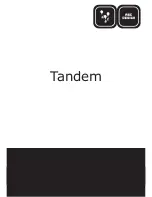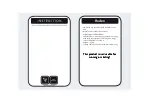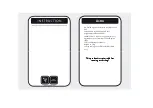
CT34002a_e.doc / Nov-15
Page 11 / 42
4.2.
System Configuration
As a master drive, either the motor of a feed roll or a measuring wheel equipped with an
incremental encoder is used.
The encoder resolutions should be at least 5 times higher than the maximum acceptable
cutting error.
At maximum line speed, the master encoder frequency should be at least about 1 kHz, for best
resolution of the analogue output. Moreover, the input frequency must not exceed the
maximum level of 300 kHz (RS422 and TTL differential encoder) or 200 KHz (HTL and TTL single-
ended encoders).
It is best to choose the ppr numbers of line and cutting roll encoders in a way to produce
frequencies in the same range. Acceptable ratios are in the range of
5:1 ... 1:1 ...1:5
Mismatching beyond 1:16 and 16:1 are not allowed. Where applicable, the (x1), (x2) or (x4)
hardware multiplication of the Master channel or the Slave channel may be used to adapt the
frequencies
The line encoder must be connected to input
1 (Master) and the cutting roll encoder to
input
2 (Slave).
For speed reference of the cutting roll drive the analogue output is used.
The unit must receive a “cutting pulse” with each revolution of the cutting roll. You can use an
external sensor (proximity switch, light barrier) or the zero pulse of the cutting roll encoder, if it
is an HTL encoder and if the encoder is fitted directly to the cutting roll with no gear ratio
between.
Please observe the minimum duration of 50 µs for the cutting pulse!
It is necessary to adjust the cutting roll drive to its maximum dynamic response (no internal
ramps, no integral control loop, high proportional gain), because the CT340 and CT641 will
generate the ramps which the drive has to follow with no additional delay
Two inputs “Jog / Trim” provide manual displacement of the cutting point on the material and
also allow jogging the cutting roll with in standstill.
After power-on or after manually moving of the cutting roll, e. g. by Jog function, you can
perform a homing sequence to move the cutting roll to its home position. When you start the
homing sequence, the cutting roll moves with a register settable speed till the cutting pulse
appears. Then it moves on to the home position, which is located opposite to the centre point
of the synchronous zone.












































